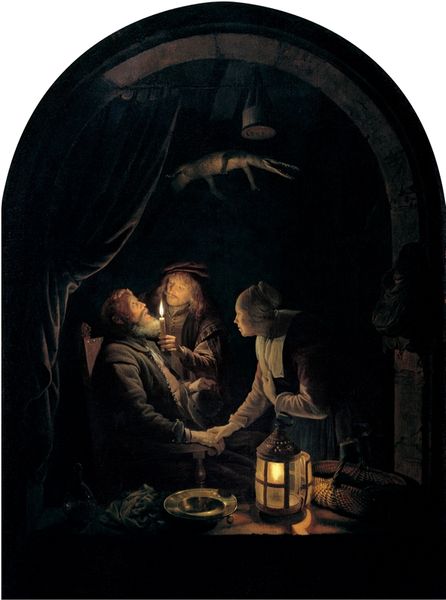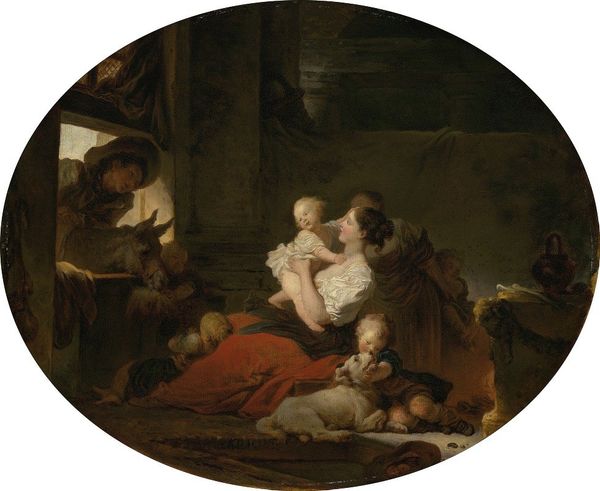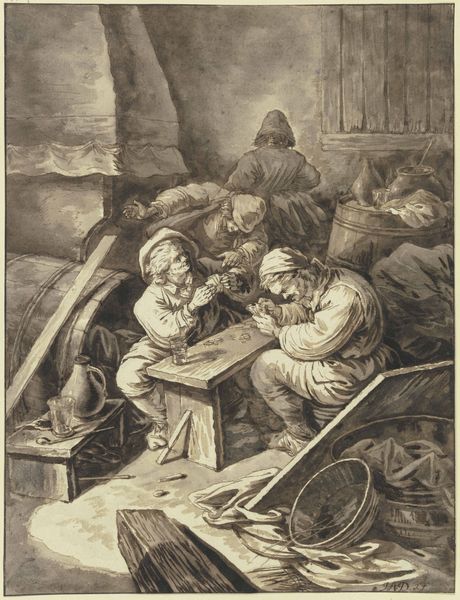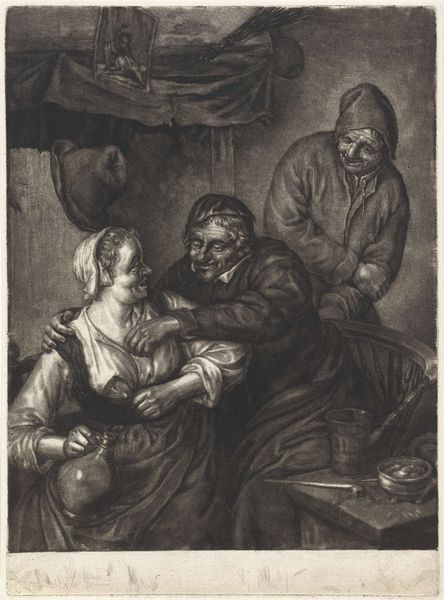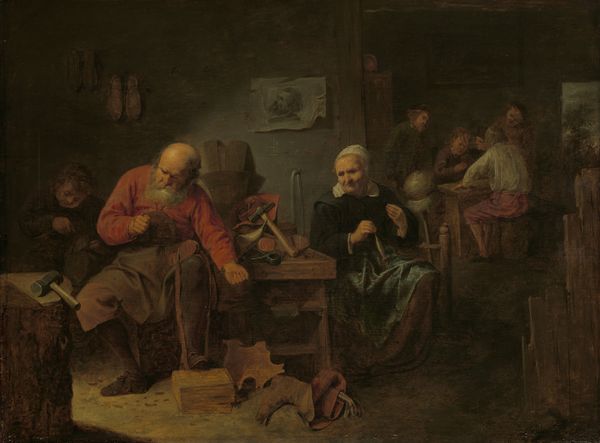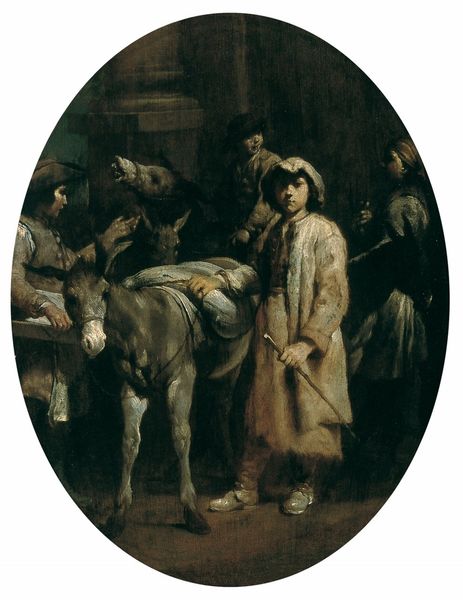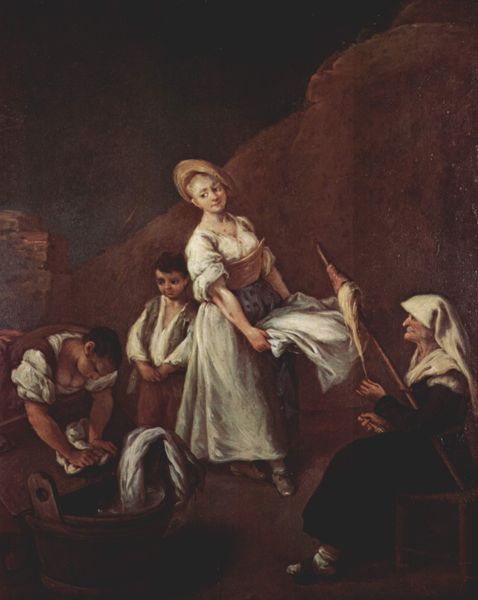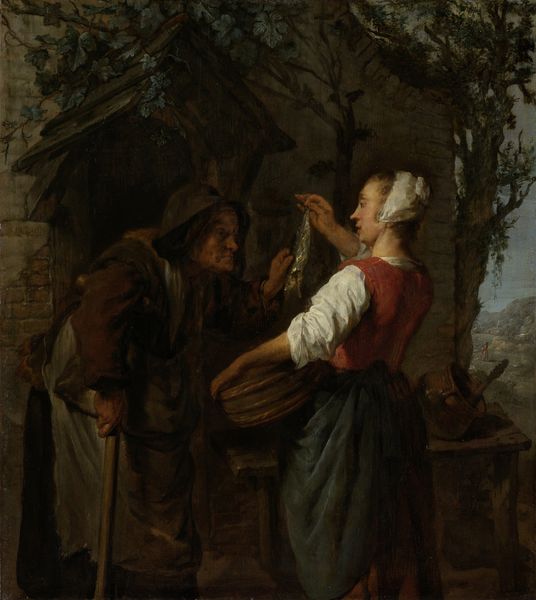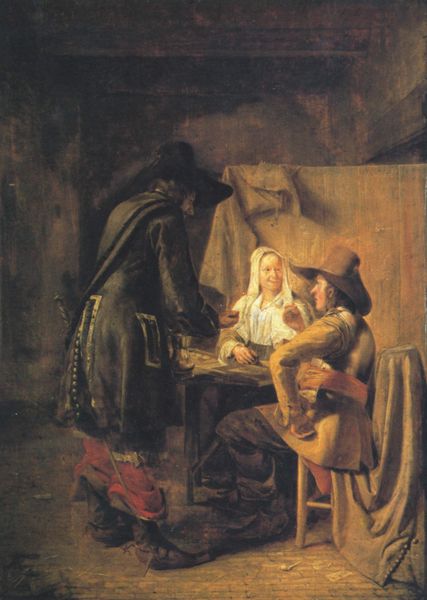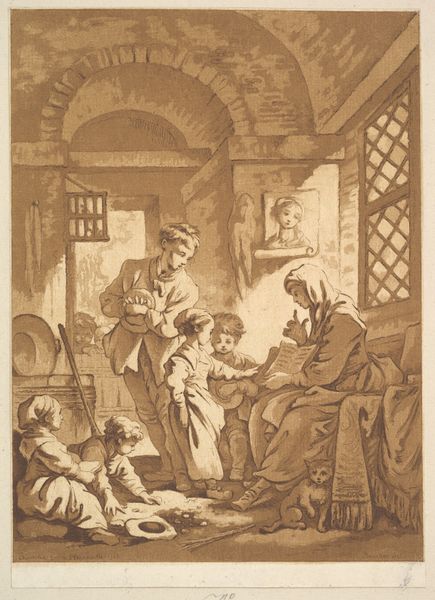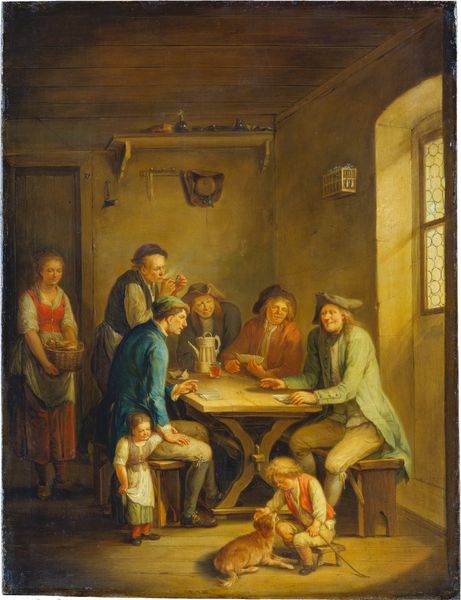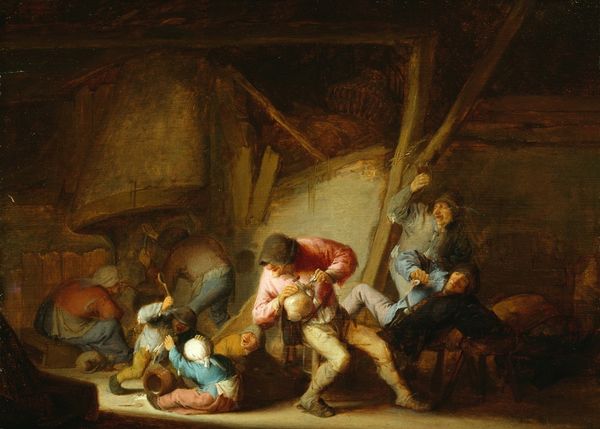
painting, oil-paint
#
portrait
#
baroque
#
painting
#
oil-paint
#
figuration
#
oil painting
#
genre-painting
Copyright: Public domain
Curator: Today, we're looking at Giuseppe Maria Crespi's "Interior with a Family of Peasants," painted in 1709. It's an oil painting and a rather intimate glimpse into the domestic life of the period. Editor: My first impression is the incredible moodiness, the warmth battling a biting chill. The light pools around the figures, but everything else just kind of melts into the darkness. It feels honest, and maybe a little sad? Curator: Yes, and Crespi's rendering of poverty moves away from simple idealization, it confronts the viewer with realities of labour, sustenance, and the roles of women and children within that setting. We see here how labour defines gender, age and also the social dynamics in 18th century families. Editor: Definitely, it's not sugarcoating anything. And those two children crouched down in the foreground – what are they doing? They look so absorbed. Is that their version of play, of surviving? Curator: Possibly. While the mother appears busy preparing something in the hearth and another daughter carries the meal, those children might be doing some rudimentary work, looking perhaps for remaining grains on the ground. The interesting choice is to stage them in the foreground so the viewer focuses on their laboring childhood, but from the father in the back to the arrangement in a pyramidal shape, we certainly understand the role of the family as central. Editor: The composition is amazing; they pull us right into the center. It is kind of amazing how we understand these nuances despite it having been painted so long ago. I imagine that's Crespi’s intention, to reach beyond the specifics. Curator: I think so. What resonates is this portrait is able to question not just art and composition, but raise very topical questions surrounding marginality and poverty that remain very relevant today. Editor: Agreed. Thinking about how this painting captures something universal – that persistent struggle for dignity and maybe that need for connection and the meaning in simply sharing a meal, transcends time. Curator: Exactly, this ability is what turns Crespi’s genre painting into timeless observation, capturing moments from the past to bring urgent considerations to our present.
Comments
No comments
Be the first to comment and join the conversation on the ultimate creative platform.

